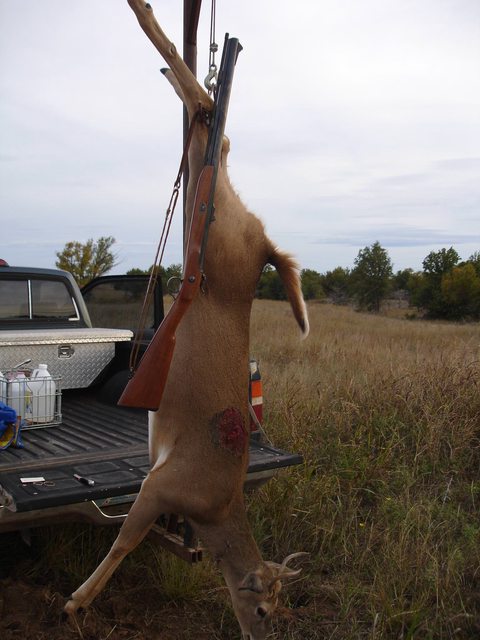The original blend of 10 to 1 lead to tin was and is known as Lyman #2 alloy. It is used to resist leading at higher velocities ( above 1200fps) with post ML firearms. My experience is that if you get past 1500 fps with pure lead ML projectiles, those beautiful petals that form up front and stay there to increase frontal dia. just blow off.I started to post a question about the lack of a good blood trail in the other thread with my Alabama deer but figured it might be better as a stand alone topic.
I was using my elk hunting load this deer season because I didn't have time to get to the range enough to dial in a PRB load, which I prefer for whitetail deer. So I was using 100gr of 2F Graf's and 380gr REAL. The entry and exit would looked identical, which suggests to me that the bullet just blasted straight through with limited/no expansion. It hit a rib on both sides. I've experienced this no/poor blood trail on one other occasion with a TC Maxi Ball and a similarly hot powder charge (T7).
Has anyone else experienced this? I'm thinking the hot load and conical projectile had 1) too much juice to cause sufficient expansion and "shock on contact" but 2) not enough energy for the type of shock one usually sees with modern rifles. I've just never had this issue with PRB over a more moderate powder charge. The vast majority of the deer I've shot with PRB have been DRT.
Combined with a shot in the upper third of the cavity and I think a poor blood trail is the result.
Could your velocity be too high?











